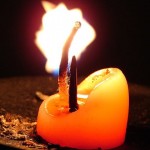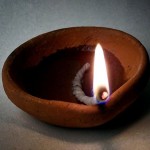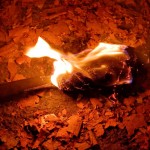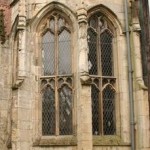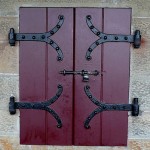Lady of Legend
Lights
Candles | Lanterns | Oil Lamps | Rush Dips | Splinters | Torches | Watchlights | Windows
Candles
- Were made from beeswax or tallow (animal fat)
- Beeswax candles were more expensive to make than tallow candles
- Almost always home-made, rather than store-bought
- Were often placed in candlestick holders, but were sometimes supported by wall brackets or iron candelabras, or were impaled on a vertical spike
- Lasted longer than rush dips and were more expensive to make
Lanterns
- Originally “lanthorns”
- Were made by sticking a candle into a metal frame whose sides were made of thin, transparent horn
Oil Lamps
- Were made by placing oil in a bowl, submerging most of a wick, and lighting the wick on fire
- The bowl was often placed on a stand, or suspended in a ring
- Illuminated better than candles or rush dips did
Rush Dips
- a.k.a. Rushes, Rushlights
- Were tapers (slender candles) made from the piths (the soft, fibrous inner part) of rush stalks dipped in melted fat and then dried
- The grease would drip onto the ground as the rush burned
- Did not have wicks
- Were cheaper to make than candles, and tended to be used by the peasantry
- A “nip” (tongs-like holder) was used to hold the rush dip at a 45-degree angle, clamping on appx. 1.5″ from the top of the rush
- Rushes held vertically would produce a dimmer flame
- Rushes held horizontally would burn too quickly
- The nip was usually mounted on an iron tripod or a wooden block
- Nips were never mass-produced, but were made individually by local craftsmen and blacksmiths
- Sometimes were supported by wall brackets or iron candelabras
- Provided weak yet clear light
- A rush light 15 inches long would burn for half an hour
- Children were often tasked with changed the rushes
- How to Make
- Gather mature rush stalks in the summer or fall
- Soak the stalks in water for a day to loosen their green epidermis (skin/rind)
- Peel back the green rind of each stalk to reveal the inner pith
- Leave a single lengthwise strip of rind on the stalk to provide support for the pith
- Dry the stalk (may take several weeks for the center to completely dry)
- Soak the stalk in hot bacon grease or mutton fat (preferred because it provided a harder, cleaner texture than other fats
- Add a bit of beeswax to the grease to make the rush burn longer
- Dry the stalks for a least a day
Splinters
- A thin piece of resinous wood coated with tallow (animal fat)
- Was held in a manner similar to the rushlight
- Common in Eastern Europe, Scotland, Scandinavia, and the Mediterranean
- England did not have many resinous trees, so they used rushlights instead
Torches
- Were typically made from green/wet sticks of wood or branches (green to keep the fire from burning to one’s hand)
- A bundle of rags that had been soaked in pitch, tree sap, tallow (animal fat), or oil would be bound to one end and lit
- Were soaked to keep it from burning too fast or easily blowing out
- If there were no rags readily available (e.g. in the forest), bark, moss, grass, leaves, and/or pieces of wood could be used (it would still have to be soaked in pitch, sap, oil, or tallow, though)
- Were used to light the interiors of large areas, such as the Great Hall
- Were sometimes hung through iron rings on the walls, or in brackets
Watchlights
- A rushlight in which two strips of rind were left on the rush before coating it with tallow
- Produced a dimmer light that burned much longer
Windows
- Were often the main source of light in the daytime
- Manors and castles would cover their windows with horn (animal horn that has been boiled and flattened so it’s almost translucent), wooden shutters, or occasionally glass (which was very expensive)
- Peasants would use wooden shutters to “close” their windows at night
